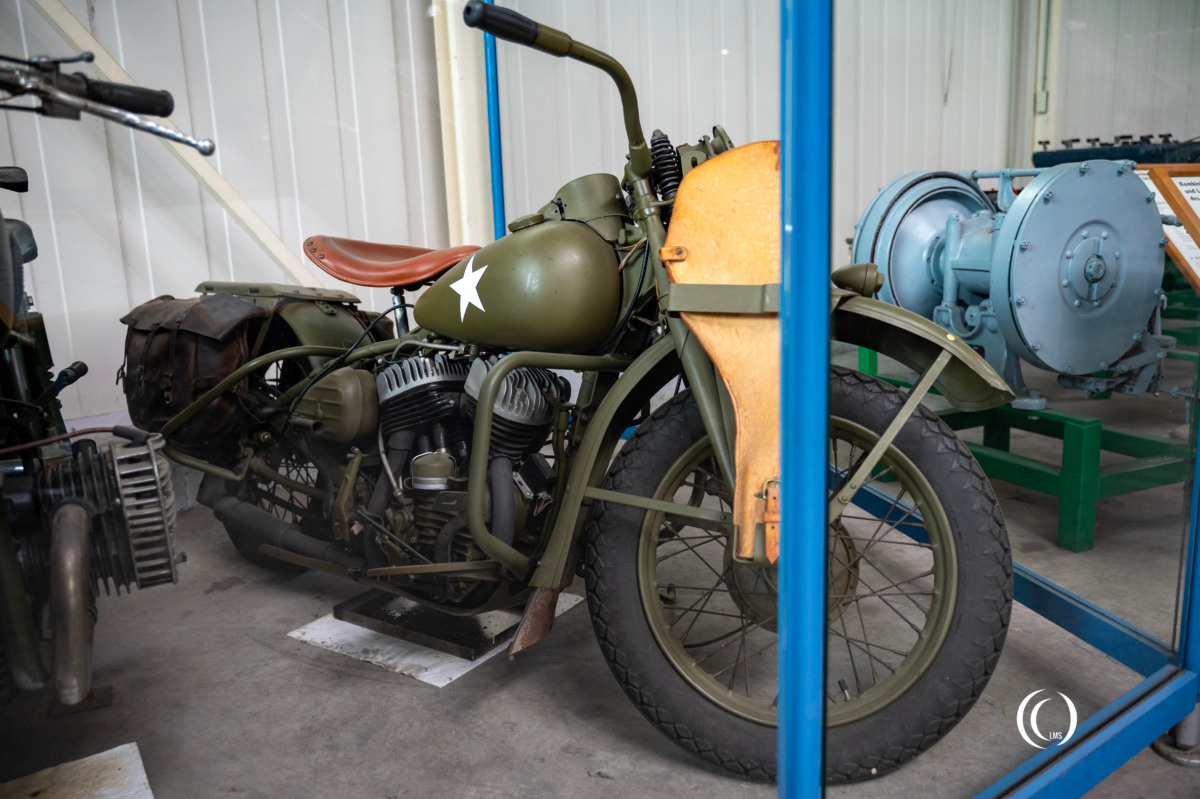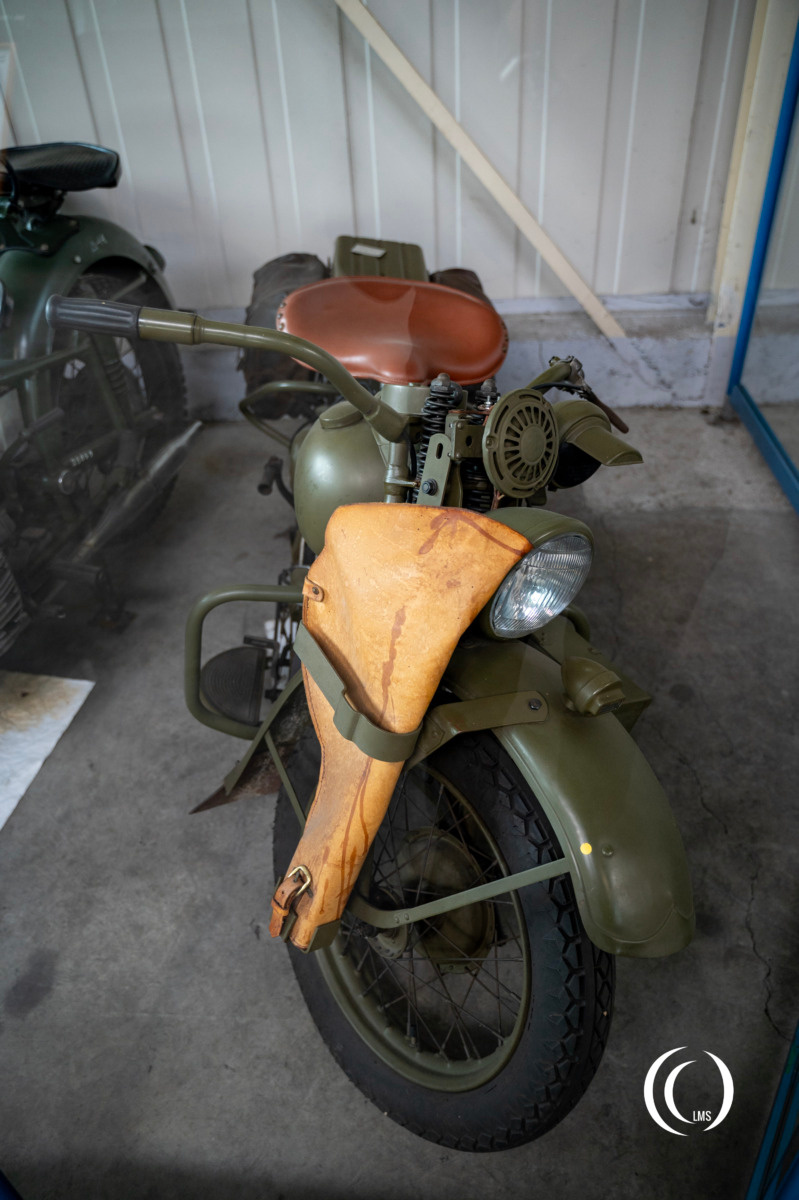
During the First World War motorcycles already proved their use in transportation for the army in many roles like reconnaissance, military police, courier, escort and traffic control. So at the outbreak of World War Two in 1939, the US Army started a selection program for a suitable Army motorcycle, for which Harley-Davidson provided two prototype “WLA” models. These models were based upon the existing “WL” civilian model, with alterations to meet Army specifications. Even though the Harleys had to compete against motorcycles of the big competitors at that time like Indian and Delco, the WLA models convincingly came through the testing program and won their commission for the US Army.
The Harley-Davidson “42WLA” motorcycle would emerge as an iconic symbol for the liberation of Europe during World War Two, as many towns and villages would often meet the first Allied soldier to “liberate” them riding on a reconnaissance motorcycle ahead of the column. This is why the motorcycle earned the nickname “Liberator”.
One of the most distinctive features of the 42WLA was its strong appearance. Clad in olive drab, adorned with military insignia, and equipped with blackout lights for nighttime operations, it cut a striking figure against the backdrop of war-torn landscapes. Its rugged aesthetics mirrored the resilience and determination of the allied soldiers who relied on it in all theatres of war.

Production

The first order of the US Army followed at the beginning of 1940 for around 400 “40WLA” models, which Harley-Davidson produced in small numbers. But after the Japanese attack on Pearl Harbour in December 1941 and the entry of the United States into the war, the demand rose rapidly and production significantly increased. An estimated 70,000 “42WLAs” were produced, with many of these delivered to other Allied nations like the United Kingdom and Russia within the lend-lease program.
A “WLC” variant was also produced by Harley-Davidson for the Canadian Army.

Specifications
Built to endure the harsh conditions of war, the 42WLA boasted a robust design and great reliability. Its 45 cubic inch (740cc) side-valve V-twin engine delivered ample power, allowing it to navigate diverse terrains with ease, whether traversing muddy trails or navigating urban streets. With its sturdy frame and resilient suspension, it could withstand the rigors of combat while maintaining stability and control.

The Harley-Davidson 42WLA in the pictures is on display in the Defense Technology Museum in Koblenz, Germany. The motorcycle has the following technical specifications:
- Manufacturer
Harley-Davidson - Year of manufacturing
1942 - Engine
2 cylinder four-stroke Otto (45-degree V-twin) - Weight
245 kg - Range (road)
160 km - Maximum speed
105 km/h

Roles
Beyond its mechanical prowess, the 42WLA played a crucial role in enhancing mobility and communication for troops in the field. Its agility and speed made it invaluable for reconnaissance missions, allowing scouts to gather vital intelligence. Additionally, its versatility as a messenger vehicle facilitated rapid communication between units, enabling army commanders to coordinate their troops based on accurate information.
